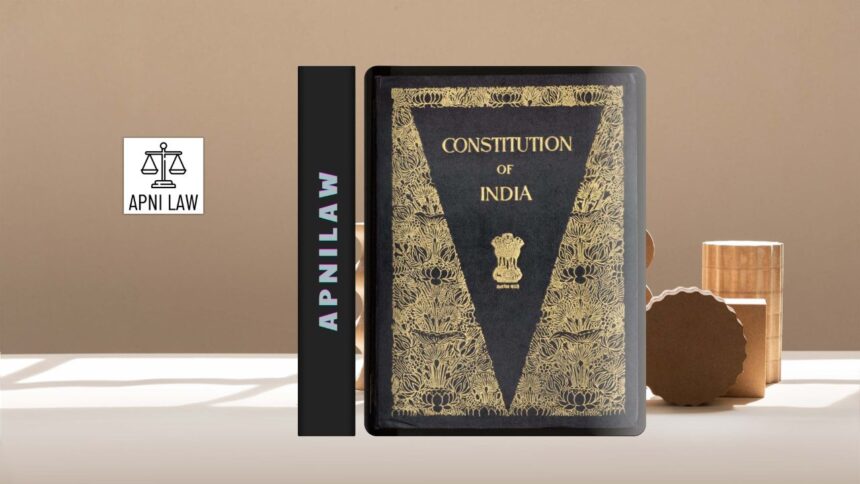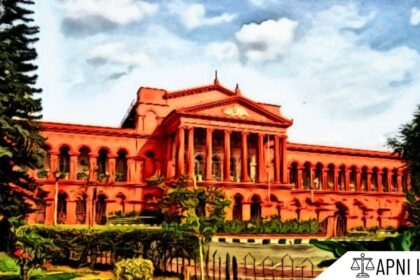What Does the 103rd Constitutional Amendment Introduce?
The 103rd Amendment introduces a new form of reservation in India based purely on economic grounds. The Government of India planned this reform to support people who face financial hardship but do not fall under the existing reservation categories. Through this amendment, the Constitution adds Article 15(6) and Article 16(6). These new clauses empower the State to create a 10 percent reservation for the Economically Weaker Sections in educational institutions and public employment. The government brought this amendment because many families in the general category struggled to access quality education and government jobs despite financial weakness. The earlier reservation system did not include them because it focused mainly on social and educational backwardness. The amendment tries to correct this imbalance. It creates an additional space where financial poverty becomes a valid criterion for reservation.
Who Can Benefit Under the EWS Category?
The EWS quota benefits only those who do not receive advantages from existing reservation categories. People belonging to Scheduled Castes, Scheduled Tribes, and Other Backward Classes cannot claim this quota because they already receive benefits through separate reservations. The government introduced specific eligibility rules to identify who belongs to the Economically Weaker Sections. The main rule states that the annual family income of the applicant must stay below eight lakh rupees. The government also uses property criteria to prevent misuse. Families that own large agricultural land or residential property cannot claim EWS status even if their income falls within the limit. The government wanted to make sure that only genuinely poor households benefit from this policy. For this reason, the eligibility rules combine income with asset evaluation. These rules ensure that the reservation reaches those who truly need economic support.
How Does the Amendment Affect Existing Reservation Limits?
The amendment increases the total share of reservation in central government institutions from fifty percent to nearly sixty percent. Before the amendment, reservation for SC, ST, and OBC groups already added up to fifty percent, which followed the Supreme Court ruling in the Indra Sawhney case. That judgment suggested that reservation should not cross the fifty-percent limit unless extraordinary circumstances arise. When the government added a new ten percent reservation for the EWS category, some critics argued that it violated the earlier limit. The government, however, claimed that economic reservation serves a different purpose and therefore can exist separately from the older categories. The amendment thus creates a new compartment of reservation that stays outside the earlier ceiling. This expansion significantly impacts the overall distribution of seats in educational institutions and vacancies in public service.
How Does the Supreme Court View the 103rd Amendment?
The Supreme Court examined the amendment thoroughly in the Janhit Abhiyan v. Union of India case. Several petitioners challenged the amendment because they believed it violated the basic structure of the Constitution. They argued that economic criteria alone should not justify reservation. They also said that crossing the fifty-percent limit created an imbalance in the equality code of the Constitution. After long hearings, a five-judge bench delivered a split verdict. Three judges upheld the amendment, and two judges opposed it. The majority held that reservation can rely solely on economic criteria because the Constitution allows the State to make special provisions for disadvantaged groups. They also ruled that the fifty-percent limit is not an absolute and unbreakable rule. The minority, however, felt that the amendment undermined the principle of equality by excluding SC, ST, and OBC communities from the new quota. They argued that giving reservation only to the general category poor created discrimination against the backward classes. Despite this disagreement, the majority opinion validated the amendment.
Why Do Supporters Consider the Amendment Important?
Supporters of the amendment believe that it adds fairness to the reservation system. India’s reservation policies focused for decades on social backwardness. Although these policies brought progress to many communities, they left out poor families among forward castes who lacked the same protections. Supporters argue that economic weakness also produces obstacles in education and employment. They claim that the State should help all citizens who face hardship, not just those who belong to specific social groups. They also say that the amendment promotes inclusive growth by expanding opportunities to individuals who suffer from poverty regardless of their caste. Many supporters consider this reform a step toward bridging gaps in access to higher education, professional courses, and government employment. They see the EWS quota as a method to reduce economic inequality in society.
Why Do Critics Oppose the EWS Reservation?
Critics raise several concerns about the policy. Many believe that the amendment disrupts the constitutional balance by passing the fifty-percent ceiling for reservations. They fear that this shift could open the door for further increases in the future. Critics also argue that economic disadvantage does not fit the original concept of reservation, which focused on remedying historic social oppression and caste-based exclusion. They claim that poverty affects individuals temporarily, while social backwardness affects communities structurally. Some also express concern that the EWS criteria, especially the income limit of eight lakh rupees, is too high and may benefit relatively well-off families instead of the poorest. Another major concern is the reduction of merit-based seats. When institutions allocate more seats for reservation, the number of open seats becomes smaller, affecting students competing through general merit.
How Does the Amendment Influence Education and Employment?
The amendment significantly changes the composition of central educational institutions. It includes prestigious institutions like IITs, IIMs, and central universities. These institutions now reserve a separate portion of their seats for EWS candidates. This shift increases the chances of financially weaker students in the general category to pursue higher studies. In public employment, the amendment creates new opportunities for EWS candidates to join government services. Many state governments have also adopted the EWS quota in their recruitment processes. This expansion broadens the scope of the amendment beyond the central level. However, the actual benefit depends on the availability of seats and vacancies. In some institutions, the government increased the number of seats to accommodate the new reservation without reducing general seats. In other places, the redistribution reduced open seats.
What Are the Broader Social and Political Implications of the Amendment?
The amendment carries strong social and political significance. It signals a shift in the country’s approach to reservation. Earlier policies focused almost entirely on caste-based inequality. With this amendment, economic weakness becomes a recognized ground for affirmative action. This shift reflects changing views in Indian society about poverty, opportunity, and fairness. Politically, the amendment creates a new class of beneficiaries. Many parties supported the amendment because it addressed a long-standing demand from economically weaker families among forward castes. The move also generated debates about the future direction of reservation in India. Some experts believe that this change may lead to wider demands for reservation reforms or expansions. Others predict that it may encourage more nuanced discussions about poverty, social justice, and equality.
What Does the 103rd Amendment Ultimately Represent?
The amendment represents an attempt by the government to broaden the reach of affirmative action. It recognizes that economic hardship can also create serious barriers in society. It tries to balance the traditional focus on social backwardness with the need to support families that suffer from financial deprivation. The debate around the amendment highlights deep questions about equality and justice in India. While supporters view it as a positive and inclusive reform, critics fear that it alters the constitutional logic of reservation. Yet the Supreme Court’s validation ensures that the amendment remains a part of the current legal structure. Through the EWS quota, the State now extends support to a new section of society. This development marks a significant moment in India’s constitutional history, where economic criteria gain official recognition as a basis for reservation.








